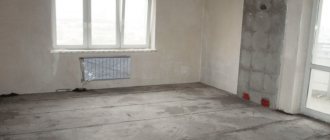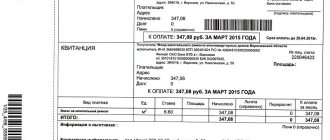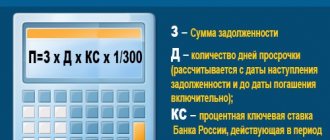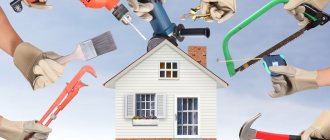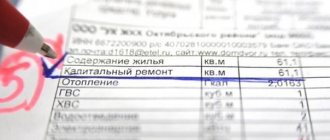Why are they collecting money for major repairs?
Since 2013, residents of the Russian Federation have received new payment receipts for major repairs in high-rise buildings. In 2012, amendments and additions were made to the Housing Code of the Russian Federation stating that ensuring the repair of multi-storey buildings falls entirely on the owners. Over the next 2 years, contributions began to be introduced in different regions of the country.
In megacities and towns, the established tariffs and timing of repairs differ. Since most residential buildings in the Russian Federation were built more than ten years ago, money from contributions goes to improve living conditions and home safety. Renovation of apartment buildings requires significant investments, so it was decided that contributions would accumulate gradually.
Major repairs require restoration of characteristics according to standards, therefore the program includes:
- Replacement of building structures in whole or in parts.
- Strengthening and repairing balconies.
- Strengthening the foundation.
- Replacing elevators.
- Roof repair.
- Insulation of the facade if necessary.
Non-profit regional funds are engaged in accumulating repair contributions. The first in line for major repairs are the oldest, most worn-out buildings. Renovations on newer homes are being delayed until 2030. On the “housing and communal services reform” website you can find out when the turn of a particular house will come, how much money has already been collected for its repairs and how much remains to be saved.
Reason for fundraising
Increasingly, you can hear a burning question from citizens: do you have to pay receipts for major repairs? The obligations of residents to maintain their property are prescribed in the Civil (Article 210) and Housing (Article 158, paragraph 1) Codes of the Russian Federation.
According to the norms of civil law recorded in these documents, all owners must maintain cleanliness and promptly repair not only their apartments, but also adjacent or territorially related basements, attics, facades, roofs, etc.
Compliance with these standards is guaranteed by Law No. 271-FZ, adopted in 2012, obliging owners to contribute funds for major repairs.
What is the contribution for major repairs in the receipt? This is a mandatory payment for all citizens, except for preferential categories .
This means that you need to pay for major repairs, but only if the procedure for informing the owners was carried out properly.
We will consider what violations can relieve the owner from paying in the next section.
Who is obliged to pay
The main category of persons who are required to pay contributions for major repairs by region are the owners of rooms and apartments in an apartment building. Such objects include houses with more than 3 apartments. Payment of fees applies to all owners - even legal entities. Moreover, it does not matter whether they have a living space or not. The municipality pays for apartments that are municipally owned. Even the state is forced to pay fees for premises that are state-owned.
If the owner has accumulated debts on contributions, then the obligation to pay them is transferred to the new owner. Only those people who own houses can avoid paying contributions:
- designated as unsafe and subject to demolition;
- withdrawn from the housing stock for the needs of the municipality and the state.
Those persons who rent an apartment or room do not pay money for the renovation of the building. This is the direct responsibility of the owner.
The amount of contributions is set locally by the constituent entities of the Russian Federation. In this case, a minimum monthly amount is assigned. But building residents have the right to independently request an increase in payment if they need additional services or want to make repairs faster.
Debt and recalculation
I have received a receipt for payment for major repairs, what should I do?
Receipts for payment for major repairs must be sent to the property owner monthly and paid by the date specified in the “Receipt” section.
The debt for major repairs is indicated in the receipt for the next month in case of non-payment or late receipt of funds.
The payment will indicate the amount of debt and recalculate for major repairs in the receipt: the amount of the contribution for the current month will be added to the existing debt.
The fund to which the contribution for capital repairs is received has the right to charge a penalty for late payment. Its size is 1/300 of the refinancing rate of the Central Bank of the Russian Federation. The amount of the penalty is also added to the payment amount.
If a payment is received from other sources to the personal account of the home owner or if the payment amount in the current period is exceeded, a recalculation will also be made next month, but only downwards. In this case, the payment amount will be equal to the difference between the monthly payment amount and the overpayment amount.
If the money arrived later than the date indicated on the receipt, the next month the amount of the debt may be indicated and recalculated upward. In this case, the homeowner must pay the entire specified amount. The excess payment will be taken into account next month and a separate receipt for major repairs will come with a zero amount.
You can read about how to find out the debt on a personal account without documents in our material.
Beneficiaries
Tenants and residents of buildings subject to demolition or transferred to the state do not pay contributions, although they are not classified as beneficiaries.
The preferential categories that have the right to receive compensation or not pay contributions for major repairs by region include the following owners:
- Large families.
- Non-working pensioners under 70 years of age. They are compensated for 50% of their contributions, and pensioners aged 80 years and older receive a full refund of the funds spent.
- Disabled people of groups 1 and 2 and families raising a disabled child.
- WWII veterans.
- Persons who have been exposed to radiation.
- Low-income families. In this case, payments are included in utilities when calculating subsidies.
- Labor veterans.
- Victims of repression who were rehabilitated.
But exemption from payment of money and compensation of contributions are not the same thing. Those who are exempt from fees do not pay them. Beneficiaries must make a payment, but later the state returns them the full amount or part of it.
How to get compensation
To apply for compensation of funds from contributions for major repairs, visit the state administration with the following package of documents:
- application form - the staff will tell you how to write it;
- citizenship of the owner of the property and other people who live in it;
- a document that indicates the right to benefits - a pension or benefit certificate;
- receipts that confirm payments for major repairs;
- a document confirming the number of family members;
- certificate of absence of debts for payment of housing and communal services for the previous period.
You can also submit these documents to the MFC or on the State Services portal.
Consequences of non-payment
The Housing Code of the Russian Federation states that homeowners are required to pay contributions for major repairs of the building. Article 155 of the RF Housing Code establishes fines for debtors: a penalty of 0.025% of the total debt for each overdue day.
Contributions for major repairs are classified as utility services, therefore, in case of non-payment, they resort to various measures of influence on the debtor:
- litigation;
- arrest;
- seizure of property;
- ban on leaving the Russian Federation.
In 2021, according to statistics, an average of 90% of citizens in the country pay the contribution money. But for each individual region the indicators are different: in Crimea, 44% of owners pay money, and in Perm - more than 100%. This result was achieved due to the fact that citizens pay not only current contributions, but also accumulated debts on payments for major repairs.
The Supreme Court of the Russian Federation confirmed the legality of collecting funds for repairs, taking into account current legislation. Therefore, in almost all situations, the court supports the fund to collect money, and not the citizens who refuse to pay.
The bank has the right to charge a commission when accepting a payment or receive it monthly from the owner of a special account
The GZHN body told how the management and homeowners associations can resolve the issue of paying bank fees for transactions on a special account, and how banks can charge a commission when accepting contributions to a special account.
At a general meeting, owners of premises in apartment buildings must choose how they will pay for the services of the credit institution where they open a special account. There are two ways:
- The bank charges a commission in addition to the paid contribution amount at the time the owner pays.
- The owner of the special account monthly transfers a percentage to the bank for servicing the account for major repairs. The source of financing for such payments may be the special account itself, as specified in clause 6, part 1, art. 177 Housing Code of the Russian Federation. This condition must be specified in the account holder’s agreement with the bank.
Is there an alternative
There are no other payment options for major repairs. But, if a citizen has reasons not to trust the fund, he can use an alternative method of saving money:
| Type of accumulation | Peculiarity |
| Fund operator account by region | The regional operator transfers funds under the program. It is used to identify houses based on their condition and set the amount of fees. This method is installed for those buildings that are already close to emergency conditions. |
| Special account for house residents | The money is kept in the account until repairs are carried out. Residents independently decide what to spend the accumulated funds on. They can negotiate a higher rate for faster repairs or for additional general house needs. |
If residents did not vote on the payment method or there were more votes for the first option, then homeowners pay the receipts and deposit funds into the operator’s account. If the majority of owners have chosen a special account, then residents are approved for this method of making payments. At the same time, residents also receive receipts, they pay for them, but the money is sent to their special account.
To accumulate funds for major repairs, an account is opened in a bank. The owners decide among themselves on what purposes to spend the money. After completing the work, the bank, by order of authorized persons, transfers funds for settlement with the team of workers and with suppliers of building materials.
Do I need to pay receipts for major repairs?
According to the law, it is possible to oblige owners to pay a new type of fee only after the local administration has carried out:
- homeowners' meetings;
- information events about the purpose and method of payment of the input fees;
- collecting signatures from residents.
The absence of these measures indicates a violation of the procedure for introducing a new payment and may serve as a reason for going to court.
The first receipt received contains a line stating that by payment the owner confirms his agreement with the terms of the contract. Is it possible not to pay a receipt for major repairs? If you do not want to pay these fees, do not pay the first payment and do not confirm the entry into force of the agreement.
If payments are not made, penalties may be imposed on the homeowner. You can avoid this :
- without paying the first receipt;
- collecting signatures from residents about the administration’s violation of the mandatory procedure (lack of a general meeting and collection of signatures);
- filing a lawsuit.
You can avoid the accrual of penalties for non-payment of contributions only if all of the above points are fulfilled.
The need to pay for major repairs to residents of new buildings
Article 170 of the Housing Code of the Russian Federation, paragraph 5.1, establishes the procedure for paying funds for major repairs for residents of new buildings. According to this clause, owners of apartments in houses built after the advent of the program for payments for major repairs begin to make contributions only after a certain period.
For a maximum of 5 years, the building is under the developer's guarantee, and he must carry out repair work. But this period is determined individually for each building in different regions. Typically this period is only 12 months. After the warranty period expires, owners begin to receive receipts for payment for major repairs.
Purpose and appearance of the document
Is it necessary to pay for major repairs on a separate receipt? This question has been worrying many Russians for several days now.
A payment for major repairs or a receipt is the basis for paying contributions for major repairs of residential buildings.
The obligation of owners to make payments is approved by law (Law No. 271-FZ). Is it worth paying a receipt for major repairs? Decide for yourself. We talked about whether owners of privatized apartments need to pay for major repairs in this article.
Now let's talk about where to get a receipt for major repairs and what a receipt for major repairs looks like.
The owners receive a receipt for payment for major repairs on a white A4 sheet. The text of the document is in small black font.
Each sheet has three sections:
- invoice notice;
- receipt (or invoice);
- information for owners.
Before the first two sections, the name and details of the capital repair fund - the recipient of the payment must be indicated. In most regions, this is the local Capital Repair Fund (a new column in the capital repair receipt).
The invoice indicates:
- the period for which the payment was accrued;
- personal account;
- surname and initials of the owner;
- actual address of the residential premises;
- housing area.
The section also provides a table for calculating the payment amount depending on the presence of debt and the accrual of interest for non-payment in previous periods, as well as payments received into the account from other sources.
At the end of the section there are lines for the payer’s signature and the date of payment.
The “Receipt” section differs from the notification invoice:
- indicating the date by which payment must be made;
- information about the receipt of the last payment and its amount;
- table for calculating the payment amount: the calculation of the monthly payment is given depending on the area of the premises and the amount of contributions per 1 sq. m., which are established by the local administration.
The third section contains data on Internet resources that have information about the Repair Fund and the conditions for using the collected funds. The department also contains information for citizens who enjoy benefits and receive subsidies for utility bills.
The appearance of the receipt may vary in different regions of the Russian Federation, but all of the listed sections must be present, as well as the line for major repairs in the payment slip.
You should not think that when you pay new receipts and a line in your utility bill, you are paying for the same thing.
In the first case, the funds go to the account of the Overhaul Fund, in the second - at the disposal of the Management Company, which must carry out repairs of the entrances once every three to five years. Do not forget that the item “overhaul” in the receipt is provided for by law. Read about the difference between paying for maintenance and repairs of housing and contributions for major repairs here.
Having figured out whether it is necessary to pay for major repairs on a separate receipt, let’s move on to the issue of recalculation and debt on payments.
Minimum payment for major repairs
In each region, the cost of contributions per 1 square meter is set independently, but the law provides for the possibility of raising prices. House residents can vote for a higher rate to get renovations started faster or to include additional features.
On average, contributions for major repairs by region per 1 sq. m is 6 rubles. But in Moscow the price for 1 meter is set at 15 rubles. In other cities, prices are often set too low - up to 3 rubles. This approach leads to the accumulation of a very small amount each year, which is enough to repair only a few houses. Therefore, many buildings can wait decades for their turn.
5 / 5 ( 1 voice )
about the author
Klavdiya Treskova - higher education with qualification “Economist”, with specializations “Economics and Management” and “Computer Technologies” at PSU. She worked in a bank in positions from operator to acting. Head of the Department for servicing private and corporate clients. Every year she successfully passed certifications, education and training in banking services. Total work experience in the bank is more than 15 years. [email protected]
Is this article useful? Not really
Help us find out how much this article helped you. If something is missing or the information is not accurate, please report it below in the comments or write to us by email
Comments: 1
Your comment (question) If you have questions about this article, you can tell us. Our team consists of only experienced experts and specialists with specialized education. We will try to help you in this topic:
Author of the article: Klavdiya Treskova
Consultant, author Popovich Anna
Financial author Olga Pikhotskaya
- not Pavel Alekseevich
08/13/2021 at 07:11 why is the basic law/constitution of the Russian Federation/ unable to protect its citizens from the feudal lords in power?
Reply ↓

